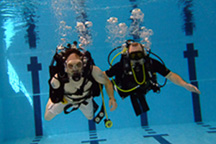Diving Projects
Britain has relied upon the seas surrounding her for many millennia. Whether it has been for fishing, the import and export of goods, travelling and exploration or for protecting her shores from potential invaders. Occasionally a craft has failed to complete its journey and has sunk below the waves, leaving a wreck. More often this has been caused by a storm at sea, but can also have been caused by an accident (i.e. collision), navigational error or through warfare.
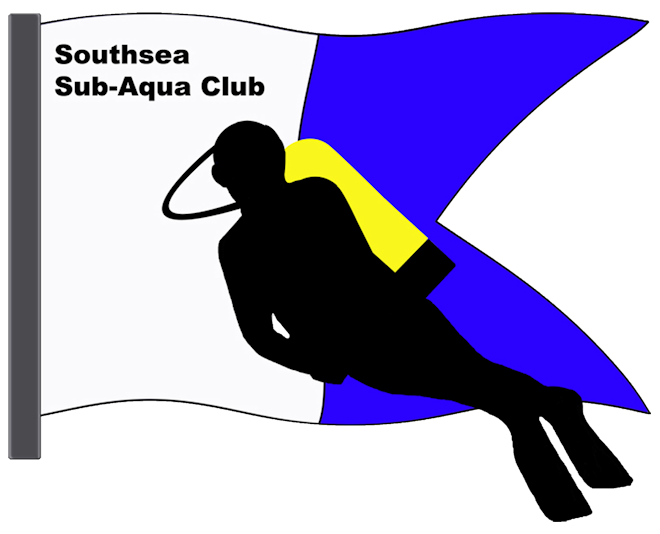
Southsea Sub-Aqua Club has a long history of wreck site investigation, the most well-known being "Project Solent Ships" which directly led to the discovery of the Mary Rose, but we didn't stop there. Over the years the Club has developed an association with a number of local wreck sites and some off the Normandy coast.
The projects involve a number of different types and ages of wrecks. They include ships, landing craft, aeroplanes, Mulberry harbours, armoured bulldozers and tanks from the two World Wars, as well as older wrecks, much older.
Today there are various courses available to help divers to record the sites and various members have completed such courses. They may have been completed within the club or through other organisations, such as the Nautical Archeology Society (NAS) or a University.
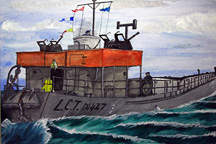
Some techniques have changed over the years as new technologies have become available. Where once an accurate sketch may have been sufficient, today you'll often find people still using tape measures and underwater slates, but also you'll find some using underwater cameras to help produce stills, video and 3D images. Often local and national news services have become interested in the stories of the projects too.
The articles below provide links to the various projects. They include photos and drawings of the sites, a record of the kind of life observed by the teams as well as some history to help bring them back to life.
A Tale of Two Tugs Article Count: 1

Southsea Sub-Aqua Club’s 2019 expedition project ‘Two Tugs’ continues our desire to learn more about the WW2 Allied invasion of Normandy and the stories of the numerous individual ships, vessels and craft that took part in this momentous and historic endeavour. Our focus has been on smaller ships and craft rather than the more significant ships and whose role was less obvious, but just as vital, to the overall success of Operation NEPTUNE.
The role of tugs in maritime operations is seldom told yet they were often the saviours of stricken ships and their crews. The tugs were also essential to the successful exercise to construct two artificial harbours which were vital to ensure that the Allied forces were able to be supplied with men, equipment and supplies to strengthen and reinforce their foot hold in Normandy.
Our investigation has revealed some surprising and unexpected results which we are pleased to share through this report. As a result of our surveys and subsequent research we believe that these wrecks are not HMRT SESAME nor USS PARTRIDGE. Indeed, our conclusions are that the wreck reported to be HMRT SESAME is the British tug ‘DUNDAS’ and the wreck reported to be USS PARTRIDGE is, to our surprise, the British Destroyer HMS ISIS. This report sets out the evidence from survey and research which supports this conclusion. In addition, this report identifies other surprising artefacts which we discovered at the wreck sites and a findings of a marine life survey which enhance the overall project report.
Project CATO Article Count: 1
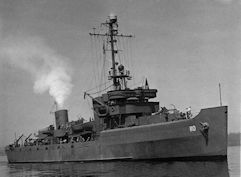
The project centres on a British minesweeper HMS Cato (J16), sunk off the Normandy beaches on D-Day.
HMS Cato and her sister ships HMS Magic (J400) and Pylades (J401) were Catherine Class minesweepers conducting mine clearance duties to protect the fleet on the Eastern beaches of JUNO and SWORD. HMS Cato sank on 6 July 1944 whilst searching for survivors of her sister ship HMS Magic.
Just two days later another sister ship HMS Pylades also sank.
There is conflicting information about the cause of all three ship losses, namely whether by mine or torpedo possibly from the German Neger or Biber human torpedo weapons. Whilst the wrecks of HMS Magic and Pylades are known, the primary aim of this project conducted by a team of divers from Southsea Sub-Aqua Club, is to locate and survey the wreck of HMS Cato.
A wreck, identified as being HMS Cato does exist in the area. However, the dimensions and appearance of this wreck cast some doubt as to its true identity. Two charted wrecks exist relatively close by that could be HMS Cato and if time and conditions allow these will also be investigated.
No Roses on a Sailor's Grave Article Count: 3
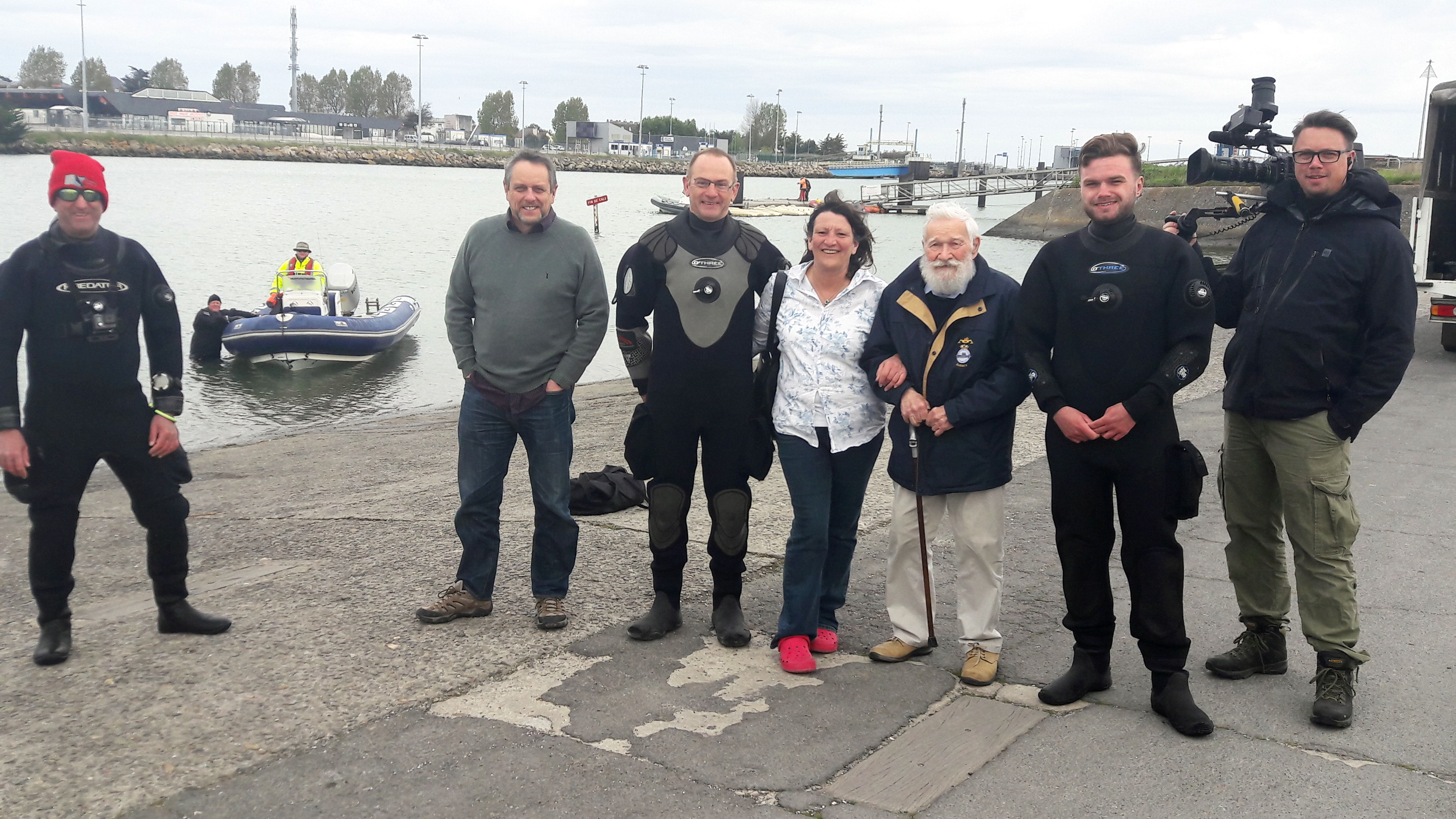
This project centres on the loss of a particular vessel during the Normandy operations, a British Landing Craft (Headquarters) sank on 25 June 1944 after a striking a mine. Royal Navy veteran Patrick Thomas was aboard the Landing Craft when the mine exploded. Many of his shipmates lost their lives when the ship sank. Patrick’s dearest wish is to pay his respects to his comrades and our aim is to help him find their last resting place – the wreck of his Landing Craft.
Our project will play a part in helping Patrick honour his friends and tell the story of the tragic events of that day. Providing research and archaeological expertise Patrick’s close friend John Henry-Philips who promised Patrick that he will find the ship for him. Patrick’s experiences and the loss of the Landing Craft and John’s endeavours to find Patrick’s ship are to be filmed as part of a short documentary by Go-Button Media.
Members of Southsea Sub-Aqua Club will also be working with subject matter expert and hydrographer Chris Howlett. With Chris’s help we have identified a wreck site which may be that of Patrick's Landing Craft. We aim to document the wreck and confirm whether it is Patrick’s ship so that he may know where his shipmates came to rest. Professional archaeologist John Henry-Phillips will oversee the archaeological survey and report writing.
Following the completion of the project's report, Alison May & Martin Davies presented Patrick Thomas with a copy. Read more here.
During an interview with both Patrick Thomas and John Henry-Philips on Wednesday 24th April, it was confirmed on the BBC One Show that the documentary would be shown in the Autumn.
The episode was aired on The One Show on Wednesday 24th April 2019 - you can view it here.
Alison Mayor & Martin Davies received the Nautical Archaeology Society's Wreck Finding Award - Dive Magazine article & BSAC Article.
Project Cardonnet Article Count: 1
Project Cardonnet
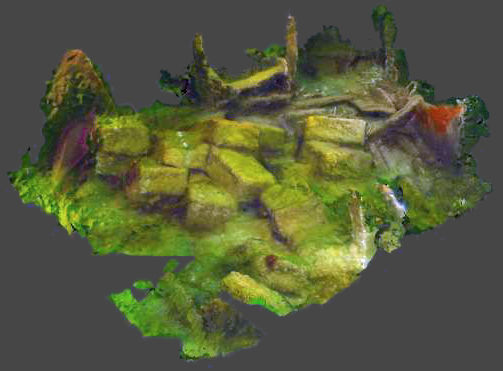
Since 1954 members of Southsea Sub-Aqua Club (SSAC) have enjoyed exploring our underwater world and the history that lays hidden by the depths. Over time our members have contributed much to the recreational diving world and the wider community through their determination, skills and hard work. From the invention of Octopush (underwater hockey) to the discovery of the historic Tudor flagship ‘Mary Rose’1 SSAC Branch2 have been one of the most active and productive branches of the British Sub-Aqua Club. For the last ten years the club have been actively recording many of the wrecks in its home waters along the south coast of England and in particular the many wrecks associated with the largest ever maritime invasion – the WW2 wrecks of 1944 Operation NEPTUNE3. It is a natural progression to extend this work to learn more about the Normandy campaign through the investigation and recording of unidentified wrecks of the Baie de Seine believed to be lost during this historic endeavour.
Project Cardonnet aims to investigate and record the WW2 Operation NEPTUNE wrecks of the Banc du Cardonnet, located in the Baie de Seine, Normandy. This ambitious project investigated two wrecks of US Landing Craft Tanks which were lost as they approached UTAH Beach as part of Operation NEPTUNE. US Landing Craft Tank (LCT(5) 458 and LCT(6) 593) both sank when they struck German mines and resulted in a tragic loss of life.
Shortly before dawn on 6 June 1944 eight US Navy LCTs carrying the 70th Tank Battalion’s DD tanks approached UTAH beach. As LCT(6) 593, with four of Company A’s DD Sherman tanks aboard, passed over the shallow Banc du Cardonnet it detonated an enormous German mine and was instantly broken in two. The power from the massive explosion propelled her men, vehicles and equipment into the air. Many lives were lost.
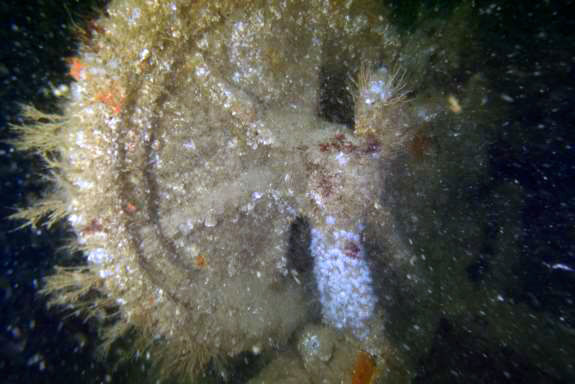
Just over 4 hours later LCT(5) 458 sank after hitting another mine while running into the beach. She was carrying 4 x M-7 Priests and supporting vehicles of Battery B, 29th Field Artillery. Many men lost their lives as the landing craft and her cargo of armoured fighting vehicles sank below the waves.
We were aware that in order to record and document the wrecks we would require permission from the Département des Recherches Archéologiques Subaquatiques et Sous-Marines (DRASSM). This was a daunting task as communications and application forms were necessarily to be conducted in French. Thankfully the Google translate site proved to be fairly reliable but we also contacted a former club member (Alain Demairé) who kindly provided a much needed conduit for conversations and his support to our project was highly valued.
Cécile Sauvage at DRASSM advised that in order to conduct the project all divers were required to obtain certification by the Institut National Plongee Professionnelle (INPP) equivalence at Level 1B. This required medical endorsement from a Hyperbaric Doctor and CMAS 3* or HSE commercial diver equivalence. Of the 8 divers who applied for INPP certification 7 were awarded INPP Level 1B. The other recreational divers who were part of the group were not permitted to dive on the same site at the same time that the project divers.
We are most grateful for the support of the British Sub-aqua Jubilee Fund and The BSAC Expedition Grant Scheme for their generous support ot the Expedition.
For this project, members of the Project Cardonnet team were awarded the BSAC Expeditions Trophy 2018.To read our news report, click here. To read the BSAC's news story, click here.
To read more about the BSAC Expeditions Trophy, click here.
Ship Rock, Selsey Article Count: 1
The waters around Selsey Bill, West Sussex, have long been a hazardous place for sailors and from Roman times to modern day, many vessels have been lost in passing this headland. This project looks at two unidentified vessels that were wrecked as they navigated around the bill.
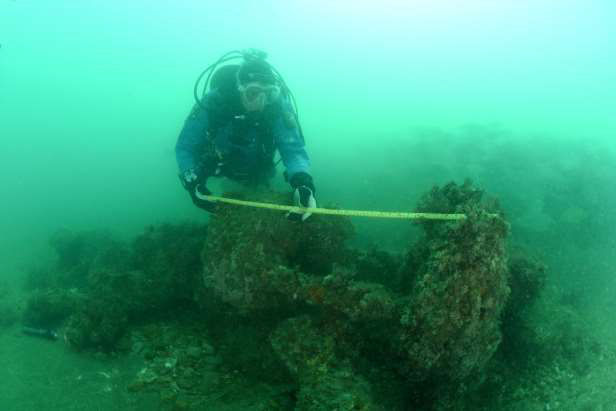
In 2014 as part of the Southsea Sub-Aqua Club’s successful Mulberry 70 project, we surveyed a site which was reported in Dive Sussex as ‘likely to be associated with the Mulberry Harbour project’. The reality was very different, what appeared to be the wreck of a small wooden vessel carrying either ballast or cargo of rock/stone. A further documentary investigation identified another wreck in the area which may help us understand the wrecks and their cargo.
Normandy 70 Article Count: 3
Normandy 70
Normandy 70 is an expedition by Southsea Sub-Aqua Club to dive and record wrecks of associated with the maritime phase of WW2 Allied invasion of Normandy otherwise known as Operation NEPTUNE. This expedition was inspired by a BSAC Southern Region initiative (NEPTUNE 70) which seeks to encourage branches to investigate and dive wrecks associated with Operation Neptune in British waters.
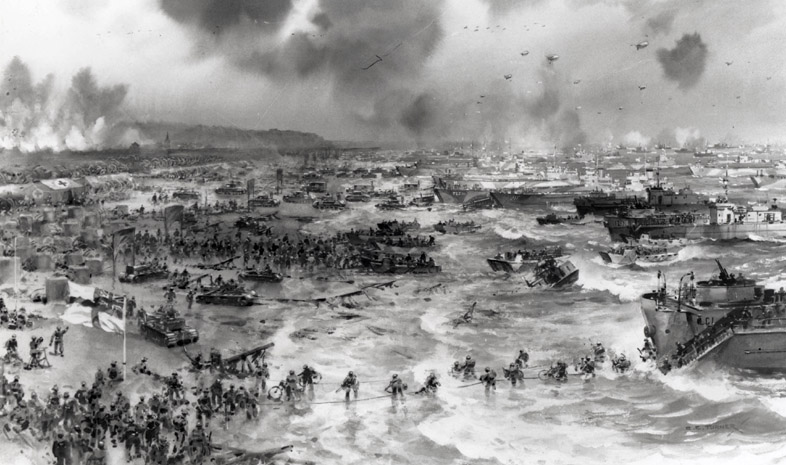
Following an approach from a group of English speaking divers, “Scuba Ninjas”, from France we are now embarking on a joint expedition to dive the WW2 Normandy wrecks with this group. Scuba Ninjas are a multi-national and multi-cultural group of divers and we are delighted to have the opportunity to dive as a joint expedition. They host a Facebook and web site to provide information and advice to English speaking divers – “Dive into France’. This multinational and multicultural expedition will provide the opportunity for divers from a number of different nationalities and cultures to commemorate the events of D Day and the subsequent liberation of France.
This joint expedition has developed fairly quickly but plans are fairly well advanced. We have engaged widely with others including UKHO, with a view to exploring and recording a number of unidentified sites which may shed light on the what remains on the sea bed. We intend to share our findings with appropriate public bodies thereby adding to the public record of this historic event.
We are most grateful to the BSAC Expeditions Grant Scheme which has made a grant of £1000 which may be used by the BSAC members to offset some expenses of the expedition, such as travel costs.
The team behind this expedition won the BSAC Expedition Prize for 2014.
Mulberry 70 Article Count: 7
Mulberry 70
In recent years divers from Southsea Sub-Aqua Club (SSAC) have completed three projects to investigate, dive and record wrecks along the South Coast of England which played a part in the WW2 invasion of Normandy.
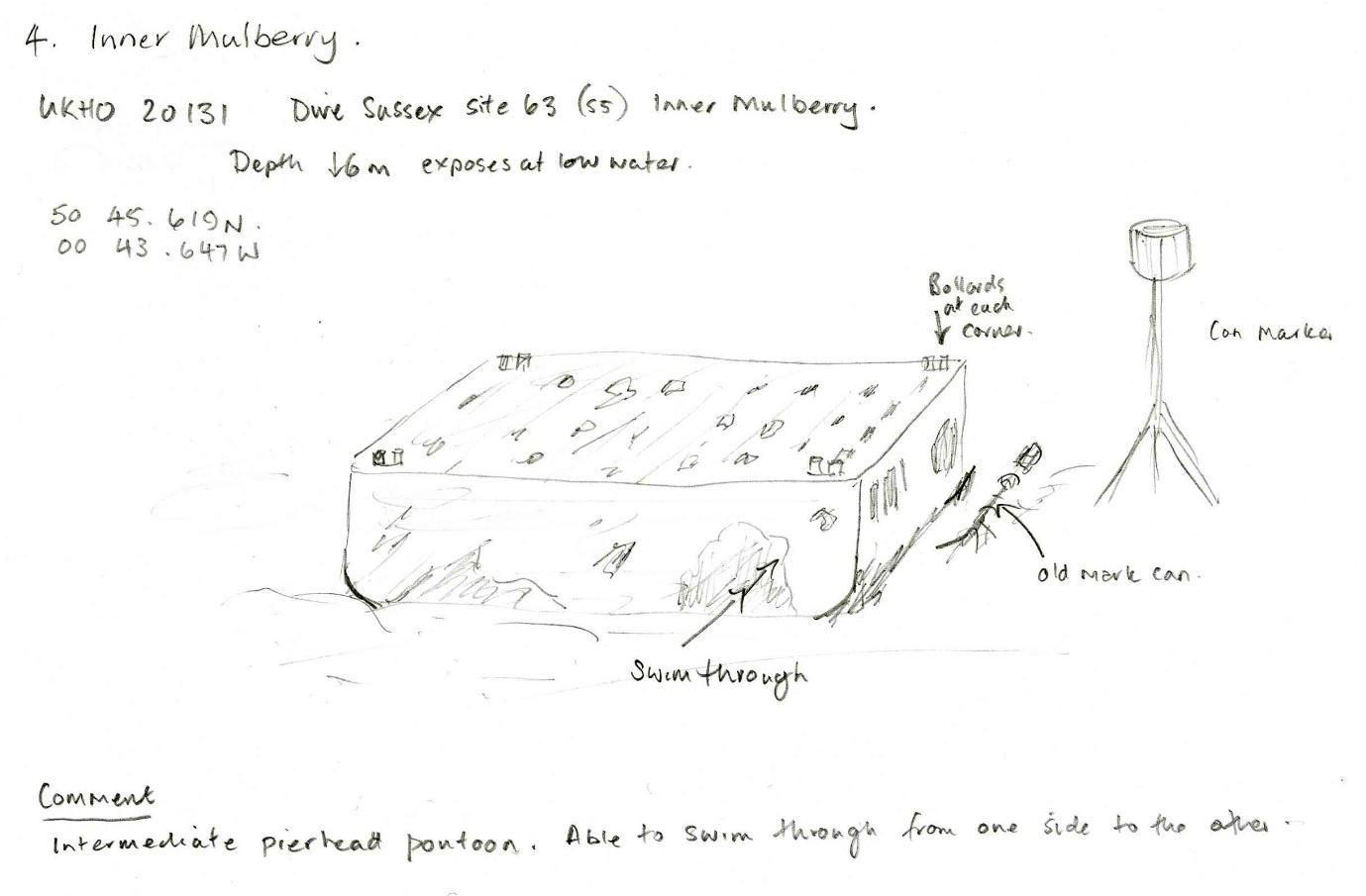
This year we are planning another ambitious project to survey 20+ sites that are believed to be connected to the Mulberry Harbours that played such a vital part in the supply of troops and equipment the Allied forces. The building of the Top Secret Mulberry Harbours, each the size of Dover was the largest ever British construction project and completed in less than a year. The various components of the Mulberry Harbours gathered along the south coast of England before being towed to France and carefully assembled to create two fully functional harbours within days of D Day was critical to supporting the invasion forces and ultimately the ending of WW2.
Along the Hampshire and West Sussex coast alone there are in the region of 30 sites associated with the Mulberry project; from foreshore (construction/slipways), exposed/intertidal concrete units, to fully submerged bridges, pontoons and associated concrete caissons. Southsea Sub-Aqua Club plans to provide an accurate and detailed record of these sites thereby adding to the public record of the Mulberry Harbours in British waters. In our discussions with English Heritage, they have confirmed that data held on Mulberry Harbours is very limited and has the potential to be inaccurate.
We are very grateful that our project has been financially supported by the BSAC Jubilee Trust with a grant of £1250 which will help defray the fuel costs for the Club RHIB, Southsea Explorer on Project Diving and sonar survey trips.
The team behind this project won the Duke of Edinburgh's Prize in 2015, Peter Small Award in 2015 and runner-up for the BSAC's Wreck Award 2015. This was a record-breaking third time that the club had won the Duke of Edinburgh's Prize.
On 3rd June 2019 Historic England announced that three of the sites (Outer Mulberry, Far Mulberry & the "Park") investigated by this project will become a listed site and will now be protected for the future.
https://historicengland.org.uk/whats-new/news/remembering-d-day-sites-protected/
https://historicengland.org.uk/listing/the-list/list-entry/1452912
https://historicengland.org.uk/listing/the-list/list-entry/1453065
https://www.bbc.co.uk/news/uk-england-48478849
Kedge Hook HM LCT 427 Article Count: 5
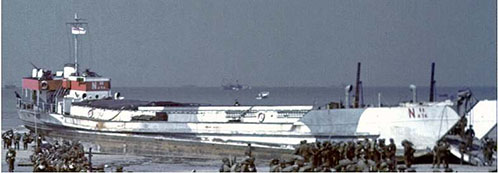
His Majesty’s landing craft tank (LCT) 427 sank at 03:03 on 7th June 1944 at Spitbank Gate as she approached her home port. LCT 427 was returning to Portsmouth after delivering a cargo of Sherman duplex drive (DD) tanks to Gold Beach on D-Day as a part of the British lead assault under Operation Neptune. As she approached Portsmouth in the early hours of 7th June 1944, part of a flotilla of tank landing craft, she was in collision with the battleship HMS Rodney. The LCT was sliced in two amidships as she collided with the bow of HMS Rodney. All thirteen crew of LCT 427 were lost in the tragedy. The incident was not officially recorded for some months during which time the LCT and her crew were reported as missing.
The exact location of LCT 427 was not known when we began our investigation.
The team behind this project won the Duke of Edinburgh's Award in 2012 and the Peter Small Award in 2013.
Neptune Wrecks Article Count: 1
Our detailed research into the formerly Top Secret war diaries and files finally revealed the story behind their sinking. The tanks and bulldozers had been lost from LCT(A) 2428, when she capsized whilst under tow on the morning of 6th June 1944 – D-Day as part of Operation NEPTUNE. The LCT(A) had been assigned to ‘J’ Force as part of the Canadian lead assault of Juno beach and had British Royal Marines and Canadian troops onboard. All onboard were rescued and returned safely to Portsmouth. LCT(A) 2428 did not sink immediately after the capsize, but had floated on for some time before finally being sunk by gunfire from the Rescue Tug ‘Jaunty’.
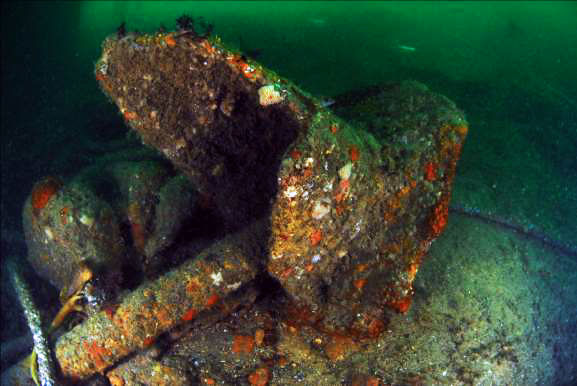
This project should, therefore, be considered an extension to the original Tanks and Bulldozers Project as it seeks to complete the historical record and document the wrecks as they are today. An update to the initial Tanks and Bulldozers report was produced in 2009 and is attached at Annex A to this Part 1 for reference and as a bridge between the two survey projects. In addition, this report also gives an opportunity to provide details on the further exciting developments of the work previously carried out in 2008 as detailed in the initial Tanks and Bulldozers report of October 2008.
The Maritime Archaeology Trust project has been published here.
Diver Magazine reported this project in it's pages at the time. You can read the two articles online here and here.
In June 2011 the Maritime Archaeology Trust published a report regarding this wreck "An Assessment for Scheduling in the Marine Zone". You can download a copy of it from here.
Upon completion of the project, a presentation was given at the club in 2014.
Tanks & Bulldozers Project Article Count: 2
A team of divers from Southsea Sub-Aqua Club will solve the mystery of how two tanks, two bulldozers and a field gun, believed to be linked to D-Day and Project Neptune, came to rest on the sea bed eight miles offshore in Bracklesham Bay, West Sussex.
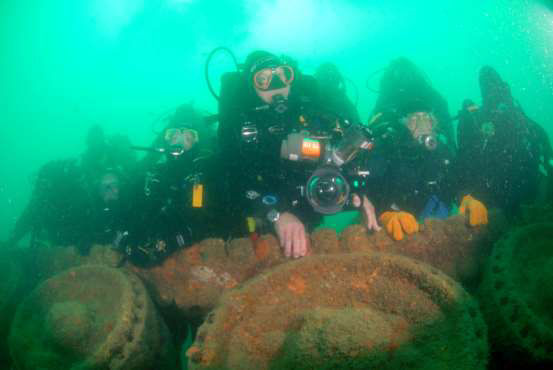
The historic WW2 armoured vehicles and gun lie jumbled up on the sea bed at a depth of 20m but there is no known associated shipwreck nearby. The divers will survey the site to establish how the equipment came to rest on the sea bed.
The project, led by Alison Mayor, has the approval of the MoD and a grant from the British Sub-Aqua Jubilee Trust.
The team behind this project won the Duke of Edinburgh's Prize in 2009
On 3rd June 2019 Historic England announced that the Tanks and Bulldozers will become a listed site and will now be protected for the future.
https://historicengland.org.uk/whats-new/news/remembering-d-day-sites-protected/
https://historicengland.org.uk/listing/the-list/list-entry/1459802
https://www.bbc.co.uk/news/uk-england-48478849
HM Submarine A1 Article Count: 13
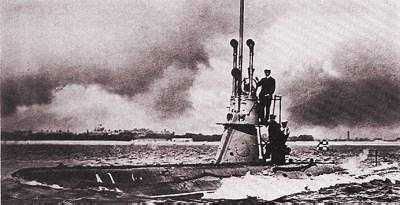
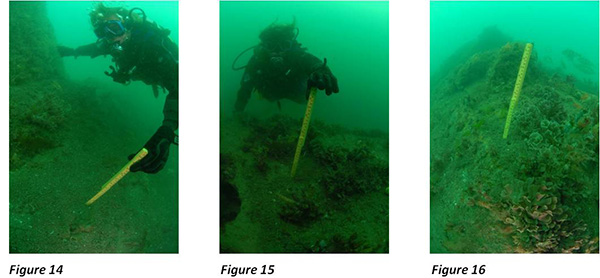
A1 was the first British-designed and built submarine. Although the Solent area wreck site of A1 has been known to a lot of divers and the marks published in many a book, the site has been off limits since its designation as a protected wreck in 1998. The combination of a new wreck to visit and the sheer importance of visiting such a historic wreck generated a lot of interest from within the club. In 2006 when we had enough qualified members to carry out survey work - some are NAS trained while others hold the Marine Conservation Society's "Seasearch" survey qualifications - we were able to survey the wreck. The survey was divided into two main areas: the hull structure and the marine life found on the hull.
SSAC Diving Officer Martin Davies is the licensee and also hosts the reports on his own website, including a 3D image of the submarine.
A number of divers have recorded and published videos on YouTube of their visit to HMS A1 over the years. We have created a playlist on our YouTube channel showing some of them. The videos have been arranged in order of when they were recorded or published (when the recording date is not clear), with the oldest first.



